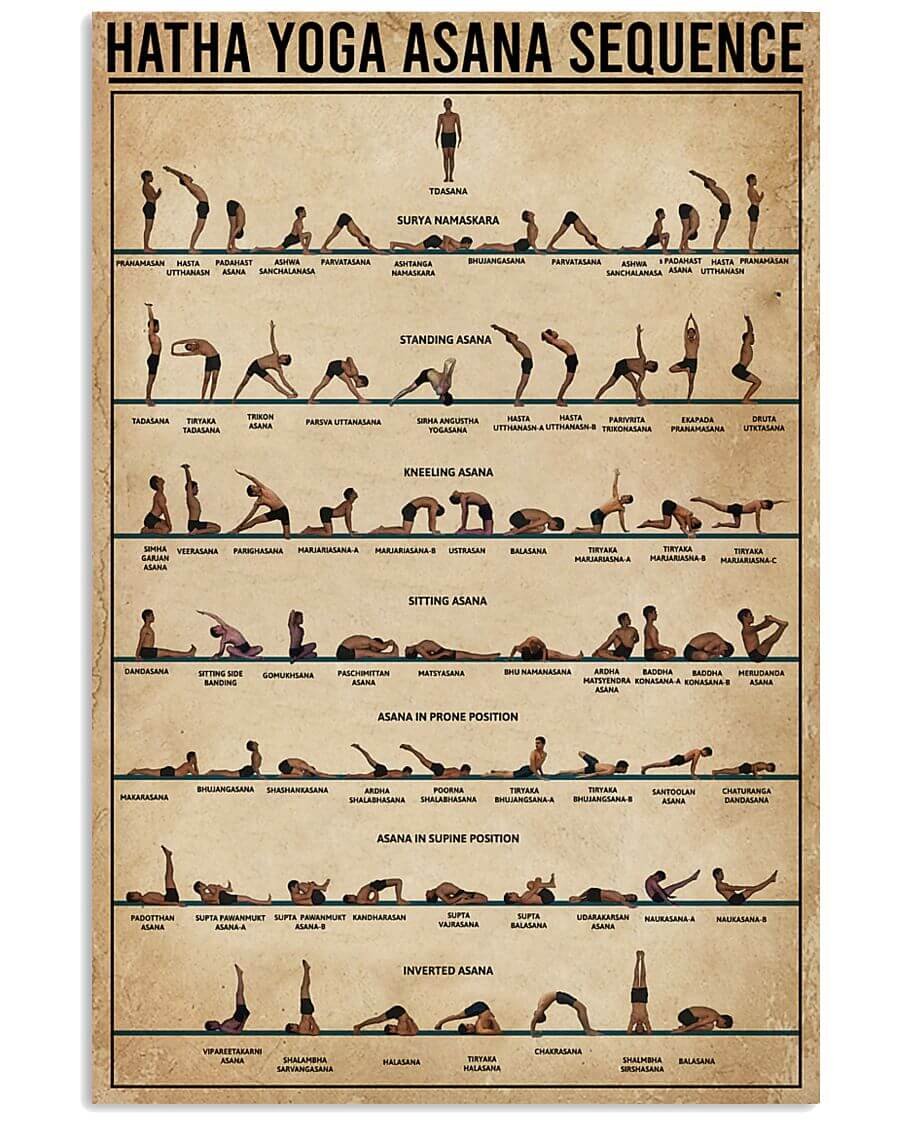Many of the schools of Hatha Yoga popular today in the West can trace their roots to the Indian Sanskrit scholar and teacher Krishnamacharya (1889-1989), but then beyond that it becomes quite complicated.
The Sanskrit word ‘hatha’ is thought to be derived from the verbal root hath which means "to force" or "hold firmly" and thus Hatha Yoga is sometimes called "forceful yoga." It is also thought to be the combination of two words with ‘ha’ meaning "Sun" and ‘tha’ meaning "Moon" and thus Hatha Yoga is said to balance the opposing energies of the body - Sun and Moon, male and female, etc.
The purpose of Hatha Yoga is the relief from three types of pain — physical, environmental and spiritual. Through the practices given in the Hatha Yoga Pradipika, we are able to prepare the body for the Raja Yoga, which is the study of the mind and its habitual tendencies.
Hatha Yoga is most often identified with the practice of physical postures (asana) and breathing techniques (pranayama).
In modern terms, Hatha yoga has become associated solely with a physical practice, typically involving a sequence of asana (yoga postures) and pranayama (breathing techniques). Hatha yoga has become part of the ‘power’ practice.
Hatha yoga is practiced at a slower pace, with the focus on the breath, controlled movements, and stretching. You can expect in a typical hatha class to hold a pose for up to or around 1 minute, which is often the case in power yoga classes.
Vinyasa yoga is pretty much the opposite, which focuses on connecting the breath to movement, set at a faster pace. In this practice, you can expect to stay in a constant flow of movements.
There are many schools of Hatha Yoga, which have many approaches to teaching. It is common for teachers to study in various schools of yoga and then blend techniques to create their own approach.
Differences among the schools has different emphasis. One school may focus on strict alignment, while another school may focus on coordination of breath and movement; still another school may focus on holding asana for a certain period of time (such as 1 minute), another still another school may focus on the flow (vinyasa) from one posture to another, thereby having a mixture hatha (slow) with vinyasa (more fast paced).
Many of the schools of Hatha Yoga popular today in the West can trace their roots to the Indian Sanskrit scholar and teacher Krishnamacharya (1889-1989), but then beyond that it becomes quite complicated.
Among the most popular and influential in the West are: B.K.S. Iyengar, who founded Iyengar yoga; T.K.V. Desikachar (Krishnamacharya's son), who founded Viniyoga, having carried on the tradition that he learned from his father; and Sri K. Pattabhi Jois, who developed Ashtanga Yoga.





